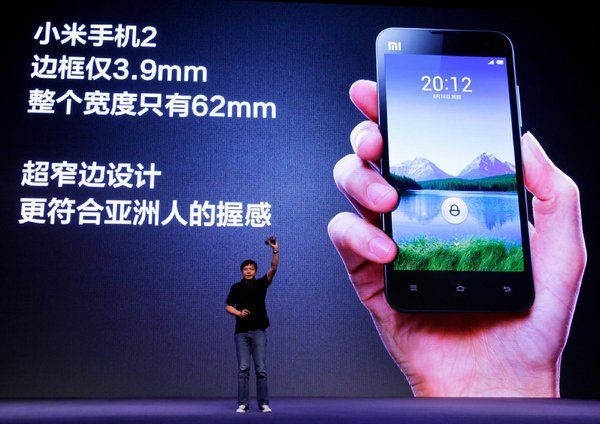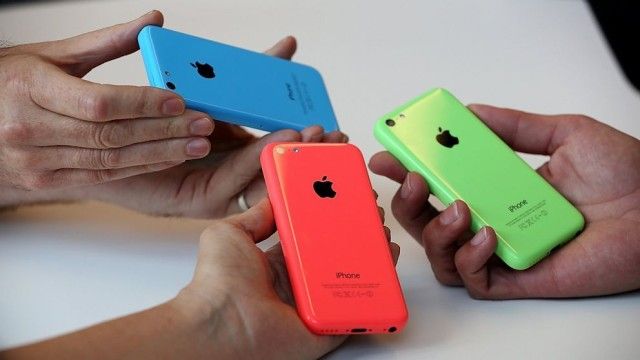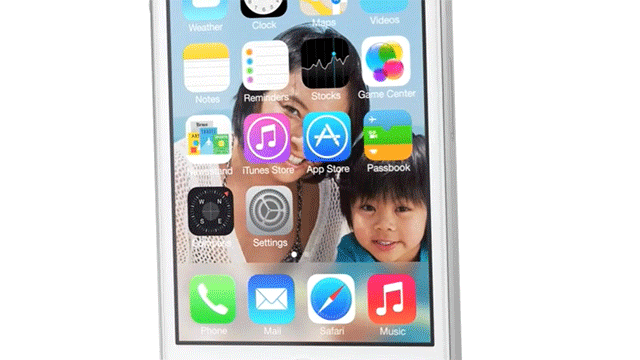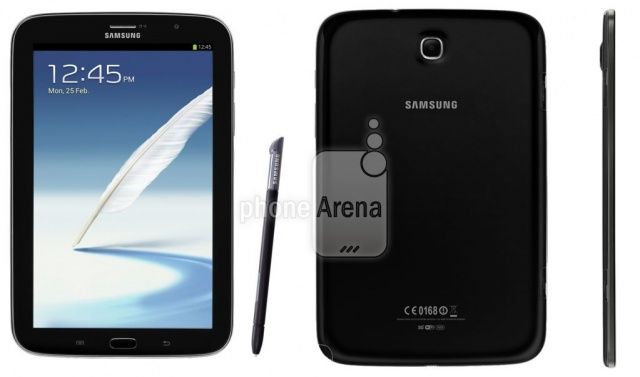This story first appeared in Cult of Mac Magazine.
“Adapt or die” is the rallying call of business strategists and evolutionary biologists everywhere. But when it comes to a U.S. tech company expanding its reaches into a new country, things aren’t always that simple.
History is littered with examples of American businesses that have tried and failed to crack the Chinese market — either because they attempted to adapt too much to local markets (thereby losing what made them unique), or else not changing enough.
While Apple’s success in China and other Asian countries is only of direct concern to shareholders, there is a very real reason for your average Apple watcher to be interested.
This post contains affiliate links. Cult of Mac may earn a commission when you use our links to buy items.
“Whenever you make a big play in a new country there’s the tension of where your values as a company bump up against the values in whichever country or culture you’re trying to gain access to,” says Kirsten Martin, Assistant Professor of Strategic Management and Public Policy at the George Washington University School of Business.
“Which side wins? Do you go down the culturally imperialist route of sticking to the way you already operate and forcing this on the new market — or do you take the stance of adapting to do whatever it is that the user base or government wants you to do? There’s no easy answer to that.”
Second only to the company’s next big product launch, the push to gain ground and solidify markets in Asia has the most potential of all new developments to dictate Apple’s future — from its business strategy to the look and feel of its products.
For anyone that is interested in predicting how Apple will change over the next few years, analyzing the options available to the company in Asia is therefore one of the utmost importance.
“The push to gain ground … in Asia has the potential to dictate Apple’s future.”
While moves such as the China Mobile deal and recent online store opening on Alibaba Group e-commerce site Tmall bode well for Apple, the biggest strategic challenge the company faces in China relates to selling the iPhone to a consumer base not renowned for spending money.
As a notably price-conscious country, Chinese mobile expansion has been built on lower-cost smartphones — usually manufactured by local companies. It is this approach that has helped drive Google’s Android mobile OS to the number one position in China, while in the process helping to push the platform to the dominant 81.9 percent market share it holds worldwide (China accounted for a massive 41 percent of all Android sales in Q3 last year.)
To directly compete with Android in this arena, Apple would have to considerably lower its margins: perhaps even flipping its business model in China to try and make the majority of its money from apps rather than hardware.
For a vision of what Apple might look like were it to buy into this cheap-and-cheerful approach look no further than the smartphone manufacturer Xiaomi: a company often referred to in national press as “China’s answer to Apple.”
Xiaomi, which launched its first smartphone in 2011, creates iPhone-styled devices running a version of the Android OS. The Apple influence is clear: its CEO Lei Jun regularly dresses in black turtlenecks (although he denies the connection to Steve Jobs), and recently paid Apple co-founder Steve Wozniak to appear with him at a press event to talk tech with journalists.
The strategy seems to be paying off, too: with the support of the Chinese government, Xiaomi has gone from a newcomer to one of China’s leading smartphone manufacturers in the space of just a few years.

But while Xiaomi’s approach echoes Apple in everything from the touchscreen interface of its devices to its lavish launch events — it also has a few key differences. For instance, the company prides itself on listening to users and changing accordingly: issuing updates every week and often personally thanking customers who suggest tweaks.
“If you give us a suggestion, and we quickly change it, you will have a long-lasting sense of achievement,” Lei Jun has said, explaining how his strategy helps to build customer loyalty. “Once you’re sure we’ve fixed it, you have a strong sense of ownership, and then you will tell classmates, friends, roommates, everyone that Xiaomi is good.”
Xiaomi’s strategy has so far helped it to succeed, although not everyone is convinced that the same will hold true over the long term.
“The problem with Xiaomi’s approach is that it is currently sitting in the middle of the market, with Apple at the top,” says George T. Haley, one of the authors of New Asian Emperors: The Business Strategies of the Overseas Chinese as well as marketing professor and director of center for international industry competitiveness at the University of New Haven. “Other companies will come in and undercut it, taking away the price sensitive market. To survive, they’re going to have to move overseas into markets where they can better margins for their products.”
Even if this doesn’t term out to be the case, though, it is worth noting that there is no guarantee that Apple would be able to follow Xiaomi’s example by leveraging local knowledge to create a business specifically targeting lower-end consumers. This has been borne out by multiple U.S. tech companies’ failure to do something similar in China.
When Microsoft began focusing on China in the mid-1990s, for instance, it discovered a country in which 90 percent of Windows operating systems were counterfeit. In an effort to get around the problem, Microsoft began work on its “Venus” project: a project aimed at creating a stripped-down version of Windows aimed at lower-end consumers.
“The idea was that your average Chinese consumer didn’t need all the bells and whistles of a higher-end PC and would be fine with what was essentially a dumbed-down product,” says Duncan Clark, chairman of business consultancy BDA China. “In the end the strategy failed, since the perception was that instead of making its products more accessible, Microsoft was talking down to Chinese users.” Venus was never released.
“This is particularly relevant when it comes to Apple’s products since Apple’s brand, at least in part, is aspirational rather than merely functional,” Clark continues. “There’s a real sense in China that you need to bring your A-game for consumers. Don’t dumb down, or try and sell an older or less good product as the latest thing, because this won’t work.”
To an extent Apple has shown a willingness to make devices such as the iPhone slightly cheaper and more affordable in some Asian countries. Perhaps rightly, however, the idea of creating smartphone specifically aimed at lower-end consumers has seemingly been examined and disregarded. The evidence? None other than the iPhone 5c.

Originally predicted to be a cheaper plastic iPhone for developing markets, the launch of the surprisingly high quality colorful iPhone showed what budget Apple looked like — and it wasn’t particularly budget at all. As a point of comparison, buying the $549 16GB iPhone 5c off-contract would be the equivalent of three months of a bus driver’s salary in China.
There are likely two main reason why Apple didn’t seriously consider the possibility of putting out a cheap smartphone aimed at the middle market of Asian consumers.
The first illustrates why examining mobile markets purely on the basis of market share is massively imprecise. While cheap Chinese smartphones running different versions of Android have indeed made Google’s OS China’s no. 1 mobile platform, these users do necessarily use many — if any — of the revenue-generating apps and services Google relies on for its income.
Research by Benedict Evans at Enders Analysis suggests that Chinese Android users use Google Play for downloading a mere 5.6 percent of all mobile apps on their devices. Another similar piece of research reveals that the average payments made per Apple game app averages at just $0.07 in China, compared to $1.90 in Japan and $0.67 in America.
Apple and Google operate on different business models, but the overall lesson here is clear: Apple could make cheaper phones geared towards a lower-end Asian customer, but ultimately they wouldn’t be enticing lucrative new users into the Apple ecosystem (how many of the purchasers of cheap Android devices would also buy an iMac equivalent, or even a tablet?) and would end up considerably cutting down on their profit margins to boot.
“The [iPhone 5c] showed what budget Apple looked like — and it wasn’t particularly budget at all.”
The second, potentially more major answer is because making mass-market phones would dilute the brand and potentially drive away higher-end consumers. Not only is China Mobile the world’s biggest mobile carrier, but it is also home to some of the wealthiest users. It is this 10 percent that Apple aims to court.
“I believe Apple was smart enough to realize that they’re better off not focusing on the less-well-off user bases — the ones that Android is clearly gunning for — for now,” says Mohan Belani, co-founder and director of e27 and one of the foremost commentators on Asian tech.
“It’s a quality vs. quantity case. There is a level of premium attached to Apple’s brand and part of the draw is that not everyone has access to it or can afford it. Focusing on the higher end of users also translates to more people paying for apps or in-app purchases, which in turn provides them with a better app ecosystem.”
“There’s a large set of buyers in China that will buy the most expensive and perceived best product available on the market,” agrees George Haley. “When it comes to this higher income group, we’re talking about people who will visit Switzerland and not buy one Rolex watch, but 10 or 12. And they’ll buy 10 or 12 Apple devices, too — just so long as it maintains high-brand equity. These are the most valuable customers to Apple in China, and once they see Apple selling cheaper products they’ll drop it.”
While this market will not grow Apple’s fortunes or market size in China overnight, positioning itself as an aspirational brand for the country’s growing urbanized middle class is a sensible move. Attaching itself to this market means that Apple’s business strategy in China is unlikely to differ greatly for its strategy in the U.S. and other countries.

This won’t curtail changes in the look and feel of Apple’s products, however. A number of experts have suggested that the appearance of iOS 7 represents Apple’s attempts to appeal to the Asian youth market: getting away from the skeuomorphic vision of previous versions which stood for the “dominance of western old-guy culture … [A] way of making the old feel comfortable with the new.”
Similarly, it is possible to look at the creation of the gold iPhone as an example of Apple embracing high- end Chinese customers. Although gold is a universal symbol of wealth (it’s called the gold standard for a reason), the color has very strong cultural connotations in Asian countries such as China.
“It may not be how [Apple] came up with the idea, but they must have known the significance of the color gold in China, especially to super-rich people,” says Hong-Kong based tech writer Truman Au. “And they were right: the gold model sells like crazy in China and Hong Kong.”
Illustrating the cultural niche that the gold iPhone 5s occupies can be seen from the moniker the Chinese media have chosen to give it: ignoring Apple’s preferred “champagne” description and instead referring to the device as “Tuhao Jin” or “local tyrant’s gold.”
Such was the demand for the model that dozens of entrepreneurial Chinese third parties tapped into the craze by selling golden stickers to “convert” existing smartphone into lookalike models. (“Dear, you don’t need to sell your kidney for the new iPhone,” read one local ad. “Instead of paying 5288 yuan [the local retail price of the 16GB iPhone 5s], you only need to spend 35 yuan to make your iPhone 5 look like a golden iPhone 5s in seconds.”)
Both of these would pale next to the biggest change Apple may conceivably make, though, which would be embracing the larger screen size of the so-called “phablet” for its next generation iPhone.
“The Chinese media [labelled the gold iPhone 5s] ‘Tuhao Jin’ or ‘local tyrant’s gold.'”
“If you look at Samsung’s success in the Asian mobile market, it has been driven by larger screen sizes on devices such as the Samsung Note,” says Duncan Clark, speaking to Cult of Mac from Shanghai. “The larger-sized phablets have become so ubiquitous here that they’ve been nicknamed ‘no-face’ because people carry these large screens around with them the whole time to the point that you don’t actually see their faces.”
George Haley suggests that the popularity of the phablet in Asia owes a lot to the challenges of the Chinese alphabet — perhaps combined with the country’s preference for so-called “crowded design”.
“The Western alphabet is much more efficient for written communication than the Chinese characters, and those used in a number of Asian countries,” he says. “Consumers in these markets need the bigger screen size because it allows them to read the nuances of each of these characters, since a very slight difference in particular characters can result in a very different meaning.”
With the phablet now becoming a worldwide phenomenon, Duncan Clark suggests that Apple would be well-advised to increase the screen size of its iPhone to keep up with consumer preferences. Mohan Belani agrees with this assessment. “Many Asian users in particular say that they prefer larger screen sizes,” he says. “If Apple wanted to do one thing to appeal to these users I would say that would be the decision to make.”

Apple might be a company used to dictating what users want rather than following trends, but in this instance, it’s all ears. Although there has been no confirmation as of yet, numerous reports have stated that Apple is working on a larger-sized iPhone 6. Recent photographs — supposedly leaked from Apple’s supply chain, showed what appears to be the metal housing for a next generation iPhone — boasting a display in the region of 4.7 to 5 inches.
If the phablet concept is embraced by Apple (which it seems inevitable that it will be, in order to match user demand) it will be a direct example of Apple following trends which begun in Asia and then rolling them out for international consumers.
Apple, it should be noted, is not the only high-end brand to feel growing pains as Asian countries become a larger part of its market.
The automotive industry, for example, has been predicted by some to pass the United States in 2016 and Europe in 2020 as the world’s largest luxury car market — despite China’s per capita income being less than $6,000. In this capacity, companies such as Buick have started introducing jade elements into vehicles — originally designed to target wealthy Asian buyers — which now ship as standard in the U.S.
“It used to be that cars were designed with the Californian market in mind, and that this would then spread outwards to the rest of the U.S., and then the world at large,’ says trend analysis expert Duncan Clark. “Today we’re seeing that influence shift to North East Asia, as a result of the size and influence of the customer base. The same is true in the tech industry.”
Chinese influence on Apple isn’t a recent phenomenon. Apple would not be the company it is today, were it not for China, which has been a key player in the Cupertino company’s supply chain. It’s also true that Chinese consumers have never up previously enjoyed the kind of influence that they exert today.
“Apple … is not the only high-end brand to be experiencing this pressure as Asian countries becomes a larger and larger part of its market.”
Extrapolating outward to look at the rest of Asia is challenging. As Clark points out, “the concept many people have of Asia is one that really only exists outside of Asia. For this reason, it is difficult to draw hard-and-fast lessons that can be applied across every Asian market, or even across single geographic locations.”
But there is also little doubt that China is just one populous part of a larger trend. Japan, for instance, is per capita one of the strongest iPhone markets in the world: with 76 percent of smartphones sold in October last year being iPhone 5 models. Considering that the uniqueness of Japanese consumer tastes had many predicting that Apple would struggle to catch on there, this is an unqualified victory. India, too, is a fast growing market for Apple products.
Apple has followed the “designed in California, built in Asia” model for many years now. In 2014, we may begin to see that transition into “designed in California, built for Asia.”
Provided that Apple can do it without upsetting users in either the East or the West, when one looks at the potential numbers who can blame them?
This story first appeared in Cult of Mac Magazine.


